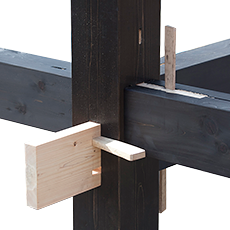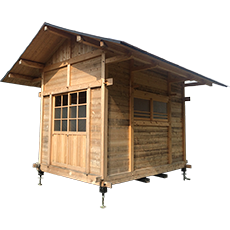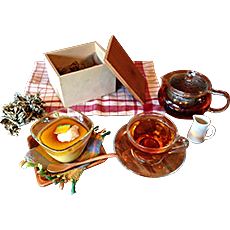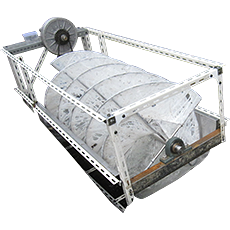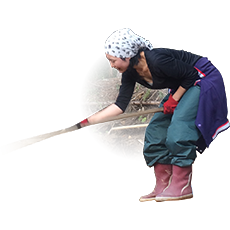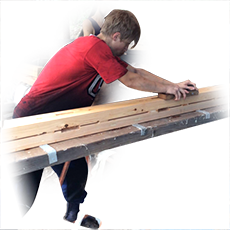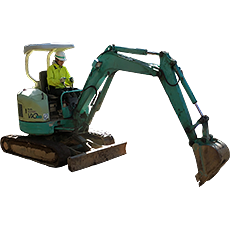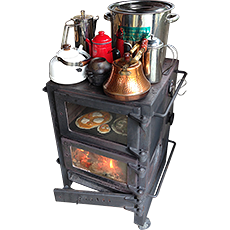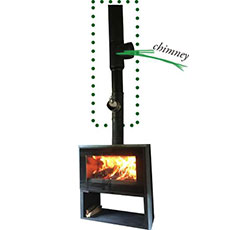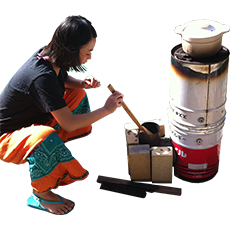-
WOODEN HOMES
木の生命力を最大限に引き出し、住まう人に安らぎと強さを与える伝統的木造軸組建築の住まい。 -
WELL BEING
清涼な空気と水、緑に囲まれて、自ら心身を調整して健康になるためのプログラムをご案内します。 -
AT THE MOUNTAIN'S FOOT
美山里山舎のカフェや宿泊のご案内、研修・見学・各種体験受入、美山への移住や生業づくりの相談、その他について。 -
SUSTAINABLE FORESTRY
持続可能な作業道づくりから伐採、運搬、製材・加工、燃料化までの流れを極小規模で実現する里山舎メソッド。 -
FIRESIDE LIVING
暖房、調理、給湯、入浴、防災…薪の火がくれる安心と豊かさを日常に取り入れてみませんか。
Festal Finnish Festivities
On the 4th of December we held a rather special workshop here at Miyama Satoyama-sha: a Christmas food workshop – Finnish style. This event was held as a part of the Eco Tourism program, which ran several different workshops in the Miyama region over a weekend. In addition to our wood burning stove cookery workshop, we also offered an informative crash-course on mountain forestry.
So, you may wonder how come a workshop centring on Finnish Christmas food is held on the Japanese countryside. As you may or may not know two of the people currently working at Miyama Satoyama-sha come from Finland. That’s us; always doing our best to provide you all with entertaining blog-posts in English whenever we have a moment to spare. While for the most part our “Finnishness” tends to take a backseat when it comes to activities here on the idyllic countryside, the chance to share our culture was practically shoved into our hands this time around. After all, culture is meant to be shared, so hey, why not jump at the opportunity?
Unlike Japan, where Christmas is considered more off a light-hearted, fun festivity dedicated to couples, it is one of the more important holiday celebrations in Finland. Similarly as to in many other Western countries it is the peak of the wintry season, and something most people speak very fondly about. It is that time of the year you don’t want to be away from home, especially having missed Christmas one to two years in a row. So when it was suggested to us we hold a cooking class in Finnish delicacies as a part of the Eco Tourism program, it didn’t take us many minutes to unanimously decide it would be all about Christmas (it is December, after all).
Preparations: A Cluster of Commotion/Crunch Time
Our menu for the Christmas lunch was a simplified version of what one could expect to find on the dinner table in a Finnish household on Christmas Eve.
– Lussekatter (a type of saffron buns)
– A root vegetable casserole
– Meatballs crammed with Christmas spices
– Glögi (Nordic style mulled wine)
– The Finnish Christmas staple, rice porridge (similar to rice pudding, but not as sweet)
Now, most Finnish food is not something you can just whip together in a few seconds. Most dishes are fairly simple and straightforward, but there is a lot of “passive” cooking time. The buns need to rise, the casserole takes quite some time in the oven, and the porridge has to simmer for about an hour. As we to fit all of the actual cooking into the two hours we had been assigned on the 4th, we prepared everything meticulously on the previous evening.
We cooked and pureed the vegetables for the casserole, polished and washed the rice for the porridge, and prepped the onion and potato for the meatballs. We whirled around the kitchen like giddy geese, trying to do a million things at once. This, of course, turned out to be impossible, and eventually we settled on a more orderly method. We measured up the ingredients one recipe at the time, and dug through our kitchen cabinets for all necessary utensils, bowls and cutting boards. On top of this, we had also planned to organise a station for making a simple Nordic Christmas decoration (a woven paper heart basket).
Somehow we managed to finish in time, and despite the kitchen looking like a war torn battleground once we were done (and cleaning up was quite the pain), we did work in a few hours of much needed shuteye in prospect of our big day.
The Real Deal
The morning of the 4th went surprisingly smoothly. Careful preparations do pay off, it seems. In the hour we had before the participants started to drop in we set up all five cooking stations, lit the fire in the stoves, and even had time to give each other a pep talk. It is, after all, always a bit daunting to lead a workshop in a language you’re not completely fluent in.
Soon enough all participants had gathered, and after rudimentary introductions we wasted no time setting to work. As mentioned, with approximately two hours to complete all dishes, time was scarce. Following our strict schedule we guided the participants around each cooking station in a specific order, devised with efficiency in mind. Cooking is, first and foremost, about having fun and enjoying the company, so in hindsight careful planning was a good move in order to avoid unnecessary stress.
While chaperoning our participants from station to station, instructing them in the culinary art of Finnish cooking, we tried our best to keep everyone entertained by sharing anecdotes or slipping in the occasional fun fact about Finnish Christmas celebrations. We talked about the origins of lussekatter and the Lucia celebration, explained why we hide a single almond into our rice porridge, and discussed why it is we enjoy heated drinks, such as glögi, in the North. People were really engaged, our nervousness wore off and we had as much fun as the participants.
 When the casserole had been popped into the oven, the buns baked, shaped and resting, the meatballs fried and the porridge puttering away on the stove we urged the participants to try their hand at making some of the decorations we had prepared materials for. We assured them it would be easy, yet some seemed to struggle slightly with the technicalities of how to weave the paper straps of the heart basket together to achieve the perfect woven heart. At least it kept everyone occupied long enough for us to lay the table.
When the casserole had been popped into the oven, the buns baked, shaped and resting, the meatballs fried and the porridge puttering away on the stove we urged the participants to try their hand at making some of the decorations we had prepared materials for. We assured them it would be easy, yet some seemed to struggle slightly with the technicalities of how to weave the paper straps of the heart basket together to achieve the perfect woven heart. At least it kept everyone occupied long enough for us to lay the table.
 Whit around 15 minutes left we pulled a few of the participants (who had successfully completed their hearts) from the table to help prepare the glögi. As black currant juice is practically unavailable in Japan we had opted for “vaalea glögi” (a light version of glögi based on apple juice). Whereas one would normally add alcohol to glögi (white wine in the case of vaalea glögi) we did not, as most participants had arrived by car. Only minutes after we had placed the pot on the stove the air was filled whit the musty aromas of cloves, star anise and cinnamon. Nothing quite gets you in the Christmas spirit like the hearty aromas of glögi.
Whit around 15 minutes left we pulled a few of the participants (who had successfully completed their hearts) from the table to help prepare the glögi. As black currant juice is practically unavailable in Japan we had opted for “vaalea glögi” (a light version of glögi based on apple juice). Whereas one would normally add alcohol to glögi (white wine in the case of vaalea glögi) we did not, as most participants had arrived by car. Only minutes after we had placed the pot on the stove the air was filled whit the musty aromas of cloves, star anise and cinnamon. Nothing quite gets you in the Christmas spirit like the hearty aromas of glögi.
Just five minutes before we gathered to enjoy our Christmas lunch, we quickly brushed the saffron buns with egg wash and threw them into the oven. This guaranteed us freshly baked buns to munch on as we sat down around the table.
A Taste of Finnish Christmas
The atmosphere at the table was pleasant. Conversation was lively among the participants, and calming Christmas songs played in the background. In-between enjoying mouthfuls of delicious food, we elaborated some more on Finnish Christmas traditions, and Finnish culture in general. All in all, our workshop was a very pleasant little lunch gathering.

rice porridge (best enjoyed with sprinkling of cinnamon sugar)

root vegetable casserole right out of the oven

golden saffron buns and spicey x-mas meatballs

food is at its best in superb company!
It is dark outdoors up in the North this time of the year, and there is nothing quite as cosy as spending quality time with loved ones in a warm house dimly lit by Christmas lights, with atmospheric music playing in the background and the waft of Christmas spices lingering in the air. Christmas is a time when family gets together. We bake, make Christmas decorations, laugh and enjoy each other’s company. While it may be impossible to replicate the exact same atmosphere in Japan, we did give it our best shot, and we hope that all participants got at least a small glimpse of what Christmas in Finland can be like. A big Thank You to all who participated, and we hope everyone had a wonderful time!
